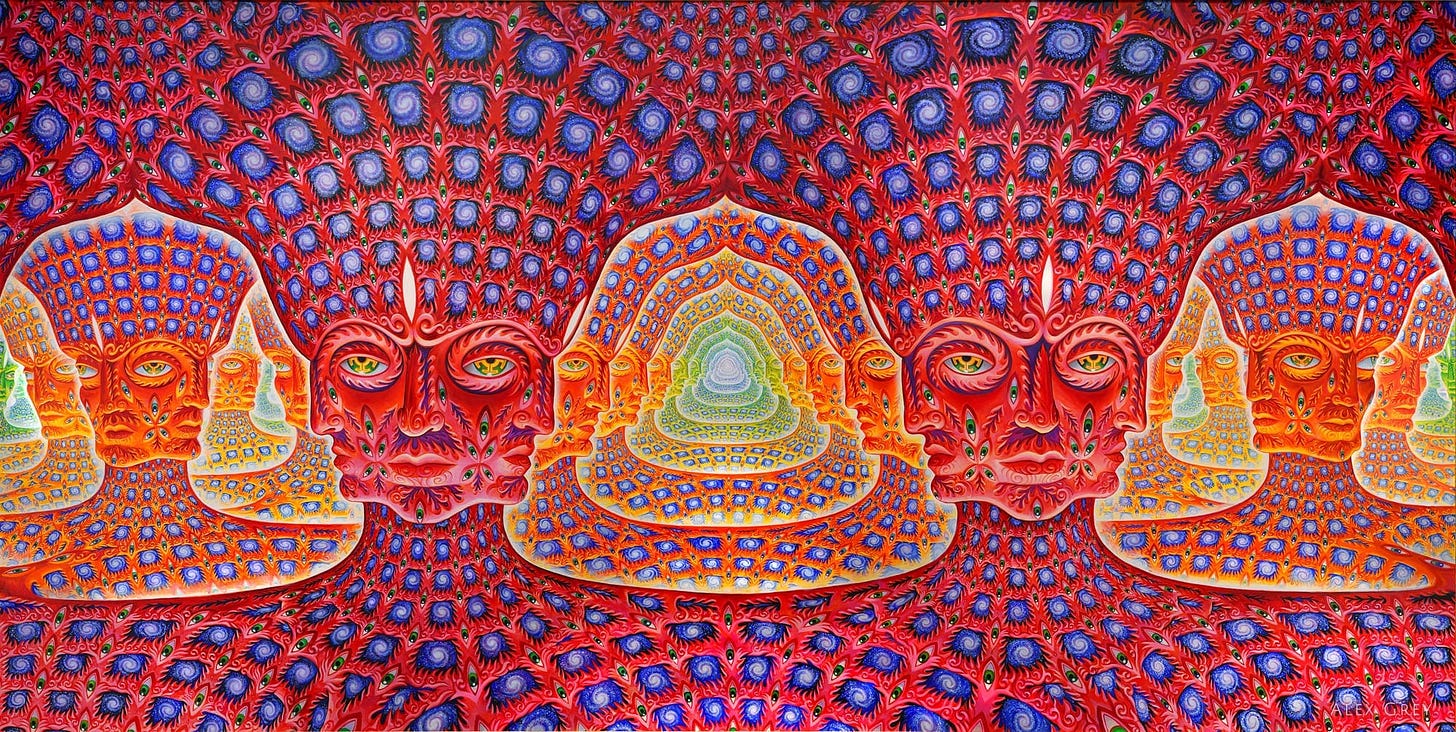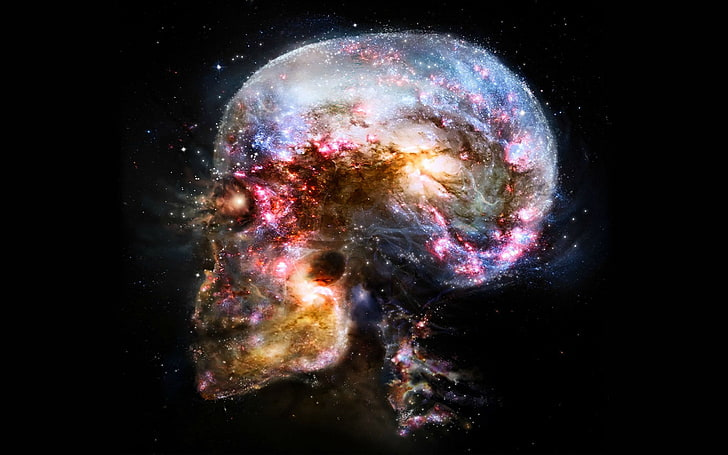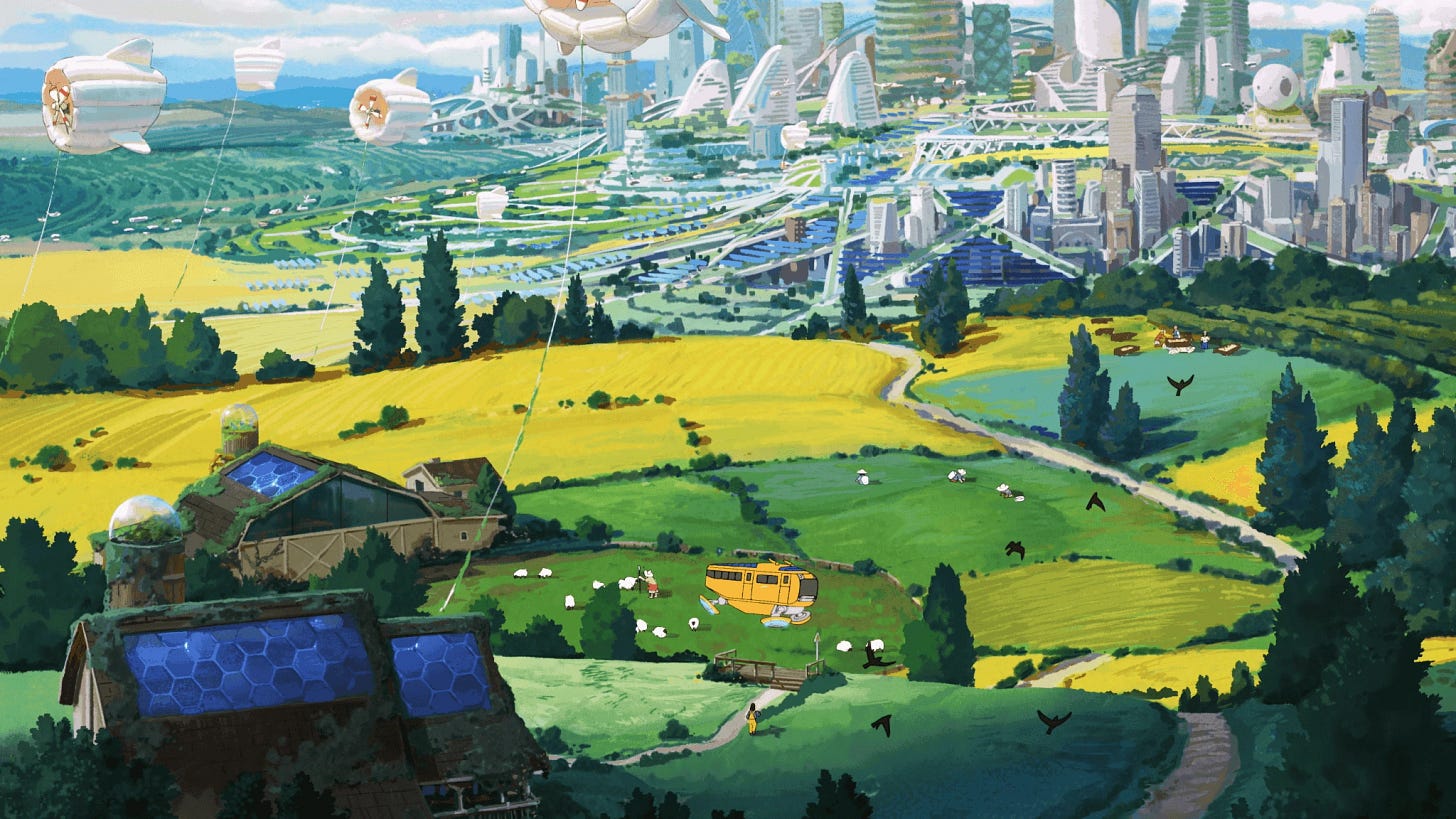Emergentism | 8. Ethics and Practices, Part III
Level 3 Practices: Embodiment
Practices at the level of Mind relate to the nervous system and the full spectrum of enriched experience that such a deep interior world affords, from complex movement to emotion. As animals with nervous systems, our internal model is developed and refined by continual concourse with the external world. This concourse is mediated via our senses—from sight, smell, hearing, and taste (all located in the head) to touch (which is extended throughout the body).
The signals our senses pick up (sensation) are sent through an immensely intricate neural web back to the brain, where they are processed for information (perception). That information then determines how the body responds, releasing dopamine here, reflexively contracting a muscle there, or formulating a conceptual sentence in reaction to an auditory stimulus there. Practices at the level of Mind, then, relate to our entire somatic experience, to pain and pleasure, as well as to the aspects of our pre-conceptual “animal brain.”
When I am driving and someone cuts me off, the immediate anger and frustration that arise are products of my animal brain responding to a stimulus. “Road rage” is largely a pre-rational experience. If our interest is developing a spiritual practice, we can probably agree that getting immediately pissed off and cursing people out does not represent a spiritual ideal. Would our inner sage act that way? “WWAD”: What Would Adyahanzi Do?
Emotional regulation is thus a crucial spiritual practice at this level, one which allows us to better condition ourselves to stimuli such that, when difficulties occur, we can respond more like the Dalai Lama we wish to be and less like the Tasmanian Devil that tends to reflexively show up.
Gaining control of our emotional responses first requires gaining awareness of how we react to things. Practicing mindfulness then (distinct from meditation, which we will discuss later) is key to increasing our conscious awareness of our behavior. Noting tendencies and patterns and naming the particular kinds of experiences that trigger our “fight-or-flight” response, for instance, deepens our self-knowledge and allows us to be more intentional about our actions and the way we show up in the world. This can keep us more tranquil, capable, and less apt to cause emotional or even physical harm to others. In this, we learn to hone and develop our will, becoming more free and intentional beings.
In doing this sort of practice, various kinds of therapy can be of great value, since our emotional reflexes are deeply linked to our social conditioning and experiences of trauma. Trauma becomes embedded and embodied at the level of Mind, which leaves its traces deep in our somatic core (see, for instance, Bessel van der Kolk’s excellent book The Body Keeps the Score: Brain, Mind, and Body in the Healing of Trauma). “Nervous breakdowns” and “neurosis” are symptoms of a wounded nervous/neuronal system, and working with a therapist can be immensely beneficial for our spiritual lives.
If issues remain unresolved at the Mind level, they will have downstream effects at our Culture level, influencing and infecting our interpersonal relationships, often with pathological justification systems devised as coping mechanisms for what’s happening lower down the Stack. Various psychotherapies, such as cognitive behavioral therapy (CBT), can be of great value in attending to these embodied traumas, and help heal them where they lie.
However, given the deeply embodied nature of trauma, cognitive approaches like CBT are not always the most effective medicine. Many find highly active, touch- and movement-based practices like yoga or dance more valuable healers in this regard. Connecting with our somatic experience in all its rich immediacy and overcoming dissociation and dislocation are absolutely vital. Such restorative practices tend to our neuronal Mind level in ways that open us up to our fullest spiritual potential.
Ultimately, the aim of Emergentist spiritual practice is the reduction of suffering and the expansion of consciousness. As we have suggested, these are actually two sides of the same coin. Expanding consciousness has a natural tendency to reduce suffering, and reduced suffering assists in establishing the proper conditions in which consciousness can develop.
One practice that supports both simultaneously is the responsible use of psychedelics (also called “entheogens”). Every day, it seems, yet another study is published showing a correlation between such psychedelic substances and therapeutic healing (whether that be the positive effects of psilocybin and ketamine on the reduction of depression, chronic pain, and addiction, for instance; the aid of LSD in treating anxiety; or other such findings).
Interestingly, the reason for these restorative effects may lie in the way they rewire the brain/nervous system towards more complex configurations. According to neuroscientist Anil Seth, the idea that psychedelics cause “consciousness expansion” is not just some silly 60s trope; it’s an empirical fact.
Writing in his book Being You: The New Science of Consciousness, Seth explains that such substances measurably increase consciousness, as measured by neuronal complexity (cf. the metric Φ, p. 65):
What happens to measures of conscious level when conscious contents change as dramatically as they do on a psychedelic trip? Back at [the University of] Sussex, Michael Schartner and Adam Barrett calculated the changes in algorithmic complexity of the MEG signal across many different regions in the brain for all three psychedelic states. The results were clear and surprising: psilocybin, LSD, and ketamine all led to increases when compared to a placebo control. This was the first time anyone had seen an increase in a measure of conscious level relative to a baseline of waking rest. All previous comparisons whether through sleep or anesthesia or disorders of consciousness, had led to decreases in these measures.
A similar 2019 study showed that the irreducible complexity of consciousness “significantly increased under DMT relative to placebo” as well.
The implications of such findings are quite remarkable, and would seem to confirm many assumptions of the Emergentist paradigm. Psychedelics are famous for the mystical experiences they induce. Consumers of psilocybin, LSD, and especially DMT often report direct experiences (or approximations) of what we have been calling “God consciousness.” At high doses, it is common for people to recount utterly transcendent experiences of wholeness, equanimity, and seeing or becoming one with God. That these phenomenological states are correlated with measurably heightened degrees of neuronal complexity accords with the notion that God consciousness is indeed the perceived reality of a radically more conscious and complex state of being—one rooted in the structural complexity of the nervous system.
Regarding Jamie Wheal’s (Recapture the Rapture) toolkit, then, we would be foolish not to see in various psychedelics the sort of sacraments so important to religions the world over. Administered as sacred sacraments (and not merely recreational experiments), the consumption of psychedelics might occur within a proper ritual container, such as is necessary for the most meaningful and supportive integration of the experiences they bring out.
Traditional holistic religions experienced certain periods of time as sacred and special. Hence our word “holiday”—the secular remnant of what was once a “holy day,” but which now means little more to most than a day off from work. With this loss of sacred time, and its fluctuating intensities and energies, we live today in the endless, uninterrupted span of profane, mundane, “regular” time—the temporal background of our general disenchantment/meaning crisis.
A new religion, however, has the possibility to re-enchant our sense of time, and entheogenic sacraments could play a major role in that. Wheal, for instance, endorses what he calls “hedonic calendaring,” in which rites of passage are coupled with specific psychedelic substances and doses to help facilitate and enhance transformation. “A rite-of-passage initiation into adulthood with 3 grams of psilocybin, surrounded by elders, mentors, and peers, could fit here,” he writes. “This is the ‘Goldilocks dosage’ perfected by Johns Hopkins to prompt insight and healing without excessive destabilization.”
So too, at that next critical juncture, marriage, might we amplify feelings of bonding, love, and desire through pharmacological ritual, heightening the valence and intensity of such a moment. “What if,” writes Wheal,
as part of the nuptials and in the company of a therapist, minister, or cherished members of the wedding party, the couple were to take 150 milligrams of MDMA (the MAPS therapeutic dosage) and share their deepest heartfelt hopes, fears, and commitments to the life they are about to create?
And, perhaps most profoundly, there is the ultimate rite of passage—the journey out of this world. Wheal suggests administering a sacrament of 5-MeO-DMT at some point before we shuffle off this mortal coil: an entheogen whose higher doses precipitate an “ego death” experience. With such a “trial run” under one’s belt, considerable fear and anxiety about the unknown can be diminished, and one can make the transit more tranquilly into the great beyond.
Level 4 Practices: Cultivation
Practices at the level of Culture relate to all the activities based on our conceptual framing of reality and our own self-conscious awareness afforded by the development of symbolic language. At this most important level we deal with the whole world of rationality, ideas, symbols, and institutions. We deal with, well, Culture, and the thinking, self-conscious persons who both create and inhabit it, as well as the ever-evolving kinds of justification systems we use to understand our place in and by means of it.
The idea of cultivation most commonly refers to the diligent work and tending of the land, the labor of bringing forth from fertile soil the full fecund richness of the earth’s possibilities. But the same root of this word lies behind words like culture (in which we tend to the flourishing of knowledge, art, human welfare, etc.) as well as cult (the ancient word for religious observance and worship).
Cultivation thus refers broadly to the active care and effort taken to enrich, to develop, to grow, to deepen—we might even say, to complexify. It is the act of intentionally directing our full conscious attention, time, and effort to the improvement of what matters most—our vibrant Earth, our rich humanity, and our intimations of the transcendent. As self-aware, rational beings, we can offer our unique gifts to the Universe to become active participants in its creativity and abundance. Through Culture, we can be serviceable in this process in a way that no other Earthly creatures can. Our minds are the most powerful known mechanism by which the Universe can come to know itself.
As we have seen, the Universe is engaged in an ongoing learning process. That process unfolds across different information processing mechanisms, allowing us to see DNA as an information-bearing code stored as biological memory, while the nervous system allows for its own way to update code and store memory through experience. With Culture, we get linguistic code, stored as collective memory through oral stories, written books, the internet, etc. With this advance, the ability to acquire knowledge about the world skyrockets.
If the aim of Emergentist spiritual practice is to assist the Universal learning process as it gains more and more Self-knowledge, Culture offers a truly privileged context in which to do so. When we understand what is driving the entire evolution of the Universe itself, something as simple as reading a book gains a whole new metaphysical significance!
In broad terms, conceptual learning in all its forms becomes a key spiritual practice. Far from some luxury for intellectuals, education should be the very essence of the spiritual life for all people. This, of course, can take countless forms. But the end goal of all of them is the increase of understanding about how the world works—from physics to chemistry to biology to the social sciences, to our own phenomenological minds.
By means of our complexity, human beings occupy a genuinely fortuitous vantage, able to use abstract symbolic expression to enhance the resolution of our internal model of reality. I cannot overstate how special this ability is in the grand scope of all known phenomena of the Universe. You have a self-conscious mind. Use it! This isn’t just a luxury, it’s a spiritual imperative based on your essence as a human being.
Today, education is largely seen as only a practical necessity, something we do to get a good job to pay the bills—or, at best, something we engage in to “better ourselves.” But the intellectual life can also be (and has been) seen as a genuinely spiritual practice. Philosophia, the “love of wisdom,” was no mere academic discipline to the ancient philosophers. From Pythagoras to Plato, Epicurus to Plotinus, philosophy was a total way of life imbued with deep spiritual significance.
Today, we would do well to recover this spiritual sense of the life of the mind. For it is no exaggeration to say that our learning is the very means by which suffering decreases, our ability to affect positive change grows, and God comes to manifest in more concrete form.
Traditionally religious folks look to their scriptures to understand the nature and workings of God. Emergentists look to books of all kinds. The full story of God is told in physics books and biology books and in the historical records of humanity. Such stuff is not mere trivia; it is the biography of the Universe, it is the sacred history of reality.
But this is not to say that our learning ought to be limited to objective facts, figures, and equations. Through the arts, through poetry and music and painting and dance, we explore the full span of emotional intensities and imaginative possibilities. The novelists and musicians of the world have just as much to teach us as the scientists and historians.
Unfortunately, we are often misled to believe, based on how our institutions are set up, that education ends in early adulthood. One turns a certain age and is no longer deemed a minor; one graduates from school and the reading stops. (According to recent survey data, 42% of college graduates never read another book after college!) But maturation, development, and learning are things that can and should continue throughout our lives.
Such education is, indeed, the very mechanism by which we advance through higher shapes of consciousness. All of us start out at square one. As infants, our conscious depth is minimal. As we age, develop, and learn, we move from 0D to 1D to 2D consciousness, and so on. The movement through the different shapes of consciousness is, like the Universe itself, a learning process. Indeed, in our individual development we relive the cosmic awakening journey in miniature. We ourselves walk the path of God’s evolution. That is how we are able to participate in it.
When we stop learning, though, we effectively stymie our continued growth—as well as the ability of God to keep growing through us. Institutional education might help get someone to 2D or 3D consciousness, but there it will leave them unless learning is embraced as the spiritual act that it is.
Education that is intentionally structured to help the individual progress to the highest shapes of consciousness possible is called Bildung. It is a lifelong process that meets the eternal student where they are at developmentally, with the aim of helping them transcend their unique limitations at every stage.
Such learning is not just a solitary endeavor. It happens best and most rewardingly in community. True philosophia unfolds in dialogue and debate, in the edifying context of peers—learners and teachers. A flourishing Emergentist church or sangha is one of rich discussion, enjoyment, and endless opportunities for co-learning—whether that’s in physical gatherings with a few friends or digital interaction with an online group. By reaching into the higher shapes of consciousness together we create new cultural code at the finest levels of resolution and depth. In this way, we allow religion to develop; the 5D God comes more into focus.
This is precisely what Emergentism is aspiring toward. It is how we participate in the evolution of God, which is the great cultural project of our time. For that is the “Cathedral” we are all working on, says Sadie Alwyn Moon. And in this Cathedral, the building material is new cultural code: new symbols, new stories, new forms and expressions of the sacred. Such is the task of mythopoeia, the metamodern mythmaking that must be undertaken if we are to instantiate God at a 5D level.
For in the Universal theophany, God must always be manifested in some shape or form. The archetypal Self is always clothed in some content appropriate to the conditions of the consciousness that produced it. At present, such 5D imagery is scant. Indeed, this book was written as but one attempt to paint some of it in. Mythopoeia, then, is a spiritual calling for the metamodern age. It is the reconstructive endeavor coming after the modern scrutiny and postmodern deconstruction of religion that has defined the meaning crisis.
The religious traditionalist, we noted, looks to ancient scripture for their sense of God. The Emergentist not only looks to the entire library of all human knowledge, she also writes scripture herself! Each of us is called upon, in the unique voices of our radical individualism, to render our God-image for the world. An Emergentist sangha or church is not comprised of passive believers, but active creators. We are a way for the cosmos to know its own possibilities; we are a way for God to be made manifest.

A plurality of God-images provides the variation for the eternal learning algorithm of selective retention that is cosmic evolution. Out of the rich diversity of attempts, God adapts and evolves to a 5D/Metamodern environment. The Universe learns God better, so we learn God better, and God learns God’s Self better.
Such a practice hinges on the ironic sincerity and informed naivete that we have seen characterizes the metamodern cultural sensibility. Adyahanzi is one such ironic prophet, but we are all called to summon our inner prophets, our inner sages. We are all called to write scriptures for the evolving God. Not all will accept this invitation—and that, too, is fine. Others will explore it privately, in their own way. But all of us are encouraged to work on this Cathedral in whatever manner suits us best. We all have something to contribute.
We are all participants and co-creators of the greater whole. Our engagement adds to the complexity of the Universe. But, more than that, our participation at the level of self-conscious Culture means we can operate in conceptual awareness of complexity. Our identities as linguistically mediated Cultural agents means we can act in light of the knowledge of complexification, with the intention of assisting and enhancing its deepening of form and consciousness.
Such a capacity is unique to human consciousness on this planet. All living creatures are a part of the great web of life, but we have the privileged vantage of knowing about the web of life! This allows us an unprecedented possibility: the ability to cultivate the web of life, to cultivate biodiversity, to cultivate complexity.
Such is the essence of permaculture, which approaches Nature and its bounty through the lens of complex systems science to facilitate organic flourishing and ecological harmony. Permaculture is not just a method but a way of life—one core to Emergentist spiritual practice.
“Conventional agriculture” (i.e., industrial agribusiness) is a product of 3D consciousness, and so is characterized by a logic of reductionism and mechanization to produce vast quantities at scale. Like all reductionist approaches, its isolation of the part from the whole has proven both miraculous in its prolific utility but utterly disastrous to the integrity of the whole. The reductionist thinking of conventional agriculture has ravaged the environment, eroding our topsoil, polluting our rivers, poisoning our bodies, torturing our fellow animals, and much more.
Permaculture, by contrast, is a neo-holistic perspective rooted in systems thinking. It sees how all the parts of an ecosystem work together to form a dynamic, symbiotic whole. It finds the feedback cycles and mutually reinforcing relationships of earth and minerals and animals and air. It is, in short, all about complexity and knowing our place in a complex world.
Contrary to the 4D critics who can only see humans as a destructive cancer, that place is actually more amazing than you might assume! A disheartening number of people today, looking at the ecological ravages caused by modern reductionism, simply conclude that mankind is nothing but a plague on the planet, a ravaging disease that seems only to break apart, degrade, and destroy. And, to be fair, much of what we do at the level of reductionistic 3D consciousness does have this effect. All of this only exacerbates the meaning crisis, as people grieve their very nature as nothing more than an infection consuming Mother Nature’s pristine glory.
Through the lens of permaculture, however, we can see a different role for humanity in the Natural scheme of things. Nature is indeed endlessly fecund and fertile, but She is also blind. Vitality spreads only against the worst of odds and amidst the most demanding of conditions. Life is a numbers game, and even when it flourishes, it can often get in its own way: some species crowd out others, or only eke by. Enter Homo hortulanus, “Gardener Human,” who, by the unique capacities afforded her by conceptual thought, knows how to cultivate the earth, increase the nutrients in the soil, manually irrigate it, and so forth. No longer now is Nature blind; She has the eyes of mankind, which can see to Her greater cultivation.
Simply put, the depth of human consciousness allows us to help Nature flourish. A patch of dirt left to the wild will by no means realize its maximal potential biodiversity. But a reflective human consciousness can create the conditions by which it can. Humans are not necessarily mere destroyers. We can also be shepherds of biodiversity, complexity herders, assisting Nature’s vitality, not diminishing it.
That is what permaculture is all about. Emergentism too. In this way, all Emergentists should strive to be good permaculturalists, living in harmony with the ecosystem in which they live. Here, the mantra is not just “do no harm”; we are not simply looking to limit our negative environmental impact. Rather, we are seeking to maximize our positive environmental impact, by doing what Nature by Herself cannot: consciously increase natural complexity.
Do you have a garden? Every practicing Emergentist really ought to. Gardening is a spiritual practice. It is not just your contribution to complexify the world and thereby make it healthier, it is also a way to assist yourself at the level of Life and Mind, providing you both the exertion and the means of a nutritious diet mentioned earlier. Ah, systems thinking!
A permacultural lifestyle is one in which humans find their place in the ecosystem. And, it turns out, our place is actually quite crucial. While your typical environmentalist will balk at the hubris of seeing mankind at the top of a food chain or hierarchical pyramid (since such conceptions usually come from the self-serving anthropocentric biases of rapacious traditional religion or materialist reductionism), the complexity-informed Emergentist actually embraces such a position, seeing in humanity’s complexity not a sense of entitlement but our responsibility to serve all Life as true cultivators.
Our complexity is the means of our generativity. And our ability to grasp complexity is crucial for living in harmony with other creatures—including other humans. For we are not only operating within Nature’s complex systems, but also social systems, systems of our own design and making. Our laws, our institutions, our politics, our infrastructure—these are the systems in which Culture exists, and by which it evolves. And, as we noted in the introduction, these should not be taken as mere givens, but come before us as objects of scrutiny, able to be more consciously reshaped and redesigned.
Given that we live in a world still rife with oppression, bigotry, ignorance, greed, and all manner of selfish short-term thinking, it is our moral obligation to seek out better configurations. “Civilizational design” I have called it. You might also think of it as systems change activism. It is the endeavor to intentionally co-create better ways of living, to fashion collective systems that work sustainably for the ennobling of all people and the flourishing of all complex life.
The end-products of such systems change activism should be social systems geared towards facilitating development and complexification. That means an education system rooted in Bildung, a food system based on permacultural principles, a political system that developmentally tends to the welfare of the whole person (such as one finds in Hanzi Freinacht’s “political metamodernism”), a technological system that is grounded in the full Wisdom Stack, and a religious belief system informed by evolution and complexity.
5D consciousness is just now coming online and establishing itself in the psycho-cultural landscape. It is our job to write the cultural code of 5D metamodernity and build the social systems based on this level of thinking. My articulation of Emergentism as “a religion of complexity for the metamodern world” is part of this broader cultural endeavor to provide new ways to be human in the world in the 21st century.
Institutions, like all systems, are feedback loops. While it is a new kind of person, ultimately, that makes new kinds of institutions, it is new institutions that help create a new kind of person. Emergentist practice engages at both points of entry. We endeavor to redesign society, but we also recognize that we must start by redesigning ourselves. The emerging culture will ultimately be based on a new, more expansive kind of self.
As it happens, higher self-realization is the essence of Emergentism. Every form of development entails the realization of a new, higher-level self. As we learn and advance through the shapes of consciousness, we transcend older ways of being. We gain a new vantage on our old self’s thinking. More opens up to us, including insights about our self that then inform our new way of being. All development is a process of self-transcendence in this way.
In Culture, we acquire the linguistic-conceptual tools by which we can better learn reality and perfect our sense of the objective world, which we are always aiming to more accurately model. But just as important as all this is the self-reflection Culture engendered, allowing humans to become aware of themselves as selves. The depth of that self-awareness increases, as we’ve seen, through the shapes of consciousness. But it is probed to the core, from a different angle, through the practice of meditation.
In essence, meditation is about turning consciousness on itself, and investigating the operations of the subjective experience per se. The mind seeks to know itself. The self seeks self-knowledge. One gains awareness of awareness and learns to observe the nature of the observer. Here, we learn the subject subjectively, and not just through concepts. Study the objective world all you want, but true self-knowledge is not complete without turning inward to study just what it is that is studying anything at all.
When we do this, we are able to gain a higher vantage on our self in a new way. The self that can be made an object is no longer the self that had been the subject. This is called gaining meta-cognitive awareness. When you look at the world through pink sunglasses, you think everything is pink. Only when you stop looking through them and learn to look at them do you realize that what you thought was a property of the world was actually only a property of the lens.
This is what meditation can do for the mind and for one’s sense of self. By learning to look at the self that you had been looking through, you gain a higher sense of self. In this way, meditation allows for expanding self-awareness. As Ken Wilber puts it:
[M]editation…is a simple and natural continuation of the evolutionary process, where every going within is also a going beyond to a wider embrace. …In other words, the more one can go within, or the more one can introspect and reflect on one’s self, then the more detached from that self one can become, the more one can rise above that self’s limited perspective.
Such increasing depth of self-realization offers an expansion of the self that is different from what mere conceptual learning can provide. The different shapes of consciousness unfold through the accretion of cultural knowledge; meditative awakening, however, entails an immediate interrogation of the self that transcends conceptual thought entirely.
Pursued with discipline and rigor, it can yield profound new understandings of the self that totally transform the individual. The small self is transcended, and consciousness expands—indeed, even to a level approaching God consciousness. Such non-dual practices are the means by which the great mystics attained the experiences cited earlier in the discussion of ancient wisdom, and have included diverse spiritual activities such as sitting, chanting, mantras, prayer, contemplation, visualization, conceptual puzzles, breathing techniques, sensory deprivation, and other methods.
While the Omega Point of such non-dual Self-realization at a total, collective level remains a distant telos for the world, it is something we can get a glimpse of through such practices. Indeed, we might use such individual experiences as the template for “paradise engineering,” the effort to realize a collective human experience that is maximally free of suffering while approximating the phenomenological state of God consciousness. Such efforts utilize the full spectrum of human ingenuity to render, as much as possible, the equanimity and bliss of divine states as a new default condition for sentient beings. Such would indeed represent the true manifestation of God on Earth—the ultimate aim of all Emergentist practice.
Buy the full book here:
























